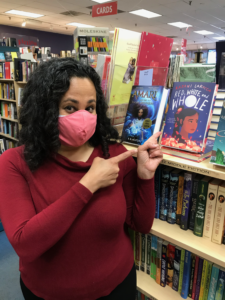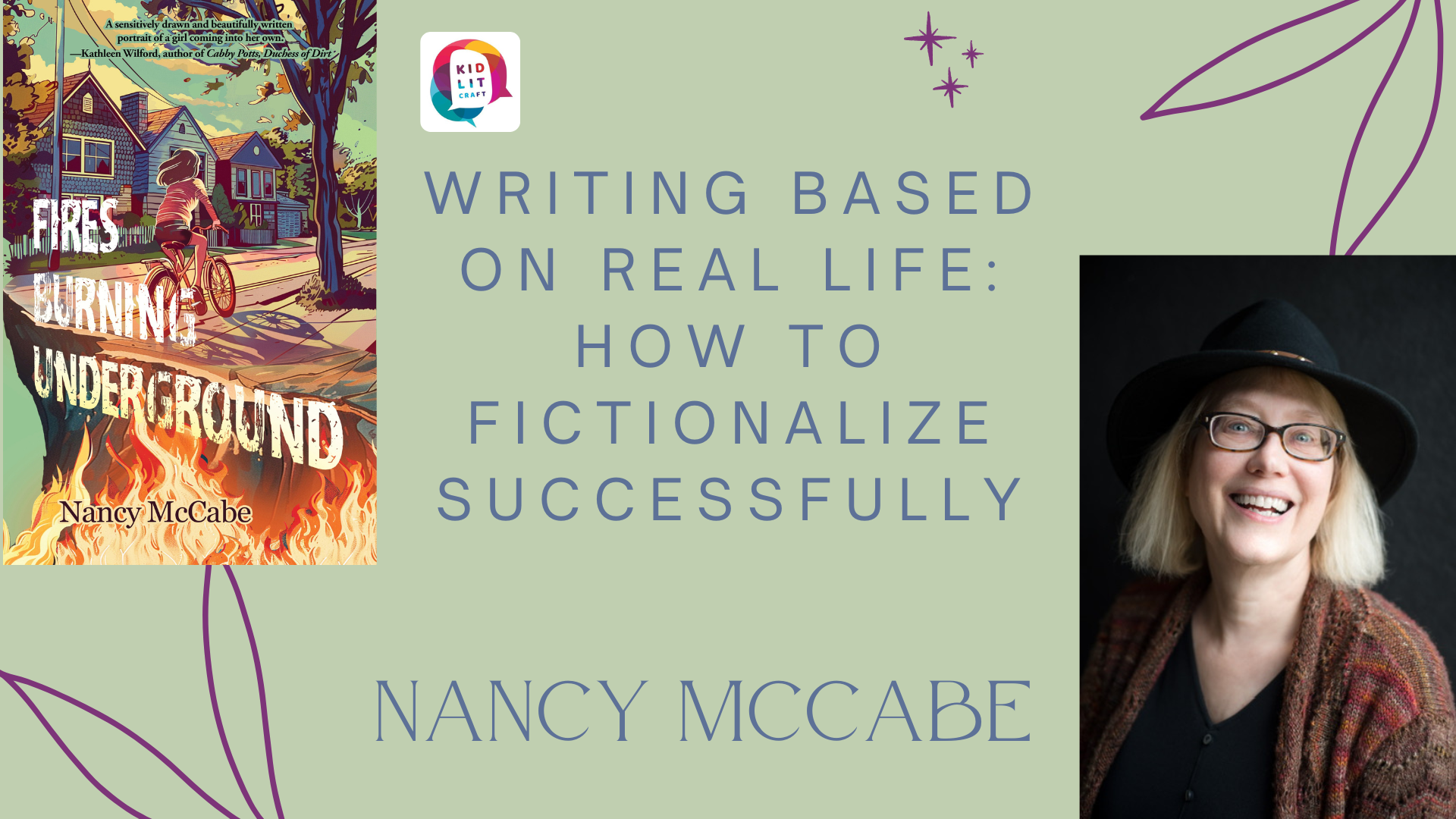Tackling Different Styles and Genres in Children's Literature: A Q&A with Rajani LaRocca
I'm in awe of Rajani LaRocca. She writes in multiple genres and styles and has four books coming out in 2021, all while holding down her day job as a doctor and being a parent. LaRocca's positive perspective shines through in everything she does. She finds it "fresh and interesting" to juggle multiple projects and she sees practicing medicine as a way to force her "to take time away from writing and 'accomplish' something else," which she ultimately believes is good for her brain. May you be as inspired by LaRocca's words as we are!--Kristi
KidLit Craft: What do you love about writing for children whether picture books or middle grade?
I love writing books for children because the books I read as a child were the ones that I still remember, the ones that stay with me even today, that helped shape who I am as a person. It’s an honor to write for young people, who have boundless curiosity, find joy even during difficult times, and believe strongly in fairness and justice.
KLC: You’ve written middle grade novels in prose and verse. How do you tackle the different treatments for the same audience?
It’s the story that determines the form. My novels in prose, although they have plenty of character development, tend to be plot-driven.

But I knew RED, WHITE AND WHOLE would be a very emotional story with a lot of interiority, so I thought that verse would be the right way to write it. Writing in verse requires you to concentrate language to tell a full story with fewer words. Because there is more white space on the page, it leaves more room for the reader to grapple with weighty topics. And because it’s brief, even a very emotional story may not feel too heavy.
KLC: What inspired you to re-imagine Shakespeare stories for a middle grade audience?
I loved Shakespeare’s plays from when I was a kid, when I played Cassius in our (very abridged) 5th grade production of Julius Caesar, and especially in 6th grade, when we read A Midsummer Night’s Dream. I loved the combination of comedy and tragedy, ridiculous and fascinating characters, and most of all, the beautiful language and themes that resonate to this day. The key with reimagining classic literature is to consider what you want to keep from the original and what you can do without, and how to make the story still make sense to readers who might not be familiar with the original work.

When I was writing MIDSUMMER’S MAYHEM, I knew I wanted to keep the sense of fun, the mixed-up love triangle/rectangle, the magical mistakes made by someone who intended to do good, and fairy feud from Shakespeare’s original. I made my main character Mimi’s older brother an actor performing in the play (and so keep the play within a play from the original!), so he could explain the most important plot elements and characters to both Mimi and the child reader. And then I remembered a connection, a pair of lines from the play, that could link it to the family in my story, and I knew what the “mystery” of the story would be!
For MUCH ADO ABOUT BASEBALL, I wanted to keep the enemies-to-friends plotline and the witty repartee between the two main characters in Much Ado About Nothing, as well as bringing in some of the magical elements from MIDSUMMER’S MAYHEM. I also have a kid character who is obsessed with Shakespeare and could explain some of the allusions to the characters in the story and the child reader.
KLC: You are a prolific author of high-quality books and incredibly busy when it comes to author visits and social media. You are also raising a family and practicing medicine as a career. How do you juggle everything? We could all use some tips!
When you love something, when you are obsessed with it, you always find a way to make time for it. And I LOVE writing. But of course, it’s not always easy.
One way I keep things fresh and interesting for myself is I try to have multiple projects going, so that when I’m feeling stuck on one, I can work on something else, and still feel like I accomplished something. And in a way, practicing medicine forces me to take time away from writing and “accomplish” something else, which is good for my brain.
But when I have to keep going on a piece of writing and the going is tough (like it often is for me with first drafts), I will set a schedule and commit to writing for at least 30 minutes. And in this case, thinking counts as writing. Sometimes I’ll set a timer and make myself type for 15 minutes without editing or judging.
I also have wonderful critique groups that give me “mini-deadlines” to work toward.
I’m also learning to be kind to myself, to give myself some slack when I’m too tired or overwhelmed to write. Sometimes I don’t have time, and that’s OK, too.
In terms of social media, I basically do what I enjoy (and strangely, I do enjoy some of it!) and leave the rest.
KLC: How has craft study informed your writing?

When I thought of the idea for RED, WHITE, AND WHOLE, I knew I wanted to write it in verse. But I’d never written a novel in verse, and I didn’t know if I could do it. So the first thing I did was to read every novel in verse for young people that I could get my hands on. I read BLOOD WATER PAINT (YA) by Joy McCullough, THE POET X (YA) by Elizabeth Acevedo, WHITE ROSE (YA) by Kip Wilson. I also read a number of MG novels in verse: OTHER WORDS FOR HOME by Jasmine Warga, ALL OF ME by Chris Baron, THE MOON WITHIN by Aida Salazar, EMMY IN KEY OF CODE by Aimee Lucido, THE LAST FIFTH GRADE OF EMERSON ELEMENTARY by Laura Shovan, and revisited INSIDE OUT AND BACK AGAIN by Thanhha Lai. I studied how these authors use line breaks and white space, cadence and sound, and different poetic forms to tell their stories. I used all of this when I wrote RED, WHITE AND WHOLE. And when I started to revise it, I made sure to read it aloud.
KLC: How do you usually enter a story? What is the first part of an idea to arrive, and how do you know you’ve got an idea worth pursuing?
I often enter a story with an intriguing premise. For MIDSUMMER’S MAYHEM, it was: what if a girl’s dad returned from a trip acting strange, and there was something really wrong with him, but the girl was the only one who noticed? And then I started asking myself questions. What’s wrong with him? Why, something magical. Why is the girl the only one who notices? Because she’s the youngest in a big, busy family, and she’s the only one waiting for him to come home so they can do things together. And so on and so forth.

For MUCH ADO ABOUT BASEBALL, I knew the setting and who the magical characters would be, and I loved the idea of a girl and a boy who had so much in common, but who couldn’t stand each other at first, finding a way to become friends. And there was a math metaphor that came to me very early in the process of thinking about this book, and it became a central theme.
The concept for RED, WHITE, AND WHOLE came to me as a metaphor—the metaphor of blood, and all that it means in terms of biology, heredity, and culture. I started with a poem called “The River” which describes blood and all that it means, and it ends with the line, “What do you do when your own blood betrays you?” I wanted that question to have two meanings in the story.
RED, WHITE, AND WHOLE is about family and friendship, heritage and fitting in, science and poetry, mythology and music. The title refers to red and white blood cells and whole blood; the connotations of the colors red and white in Indian and American culture; and the colors of the American flag.
KLC:What do you wish you had known about the publishing industry that you know now?
I’ve learned that a book deal, and even a published book, is not the end of something; it’s just the beginning. Once it’s published, your book will go off into the world and have its own life, and it will mean so many things to so many readers. Whenever I meet young readers who are engaged and eager to tell me what they think of my stories, I am staggered, humbled, and incredibly grateful.
I’ve learned that the most important thing is to keep writing about what I love, what’s important to me, what I’m curious about. I’ve learned to put a piece of myself in every story. And I’ve learned that being vulnerable in my writing means that it will resonate with others.
KLC: How has being published changed your writing practice/writing process?
I’ve learned to write on a deadline and to handle multiple projects at multiple stages of revision. I’ve learned to embrace and even love what I once thought of as a nemesis: the dreaded synopsis.
I’ve tried to streamline and shorten my process in terms of getting an idea, writing a draft, and revision. But I’ve also learned that some stories take more time, and to be OK with that.
KLC: We know you have lots of news in 2021 and beyond. What books can Rajani LaRocca fans look forward to?
I have four more books coming in 2021!

My picture book BRACELETS FOR BINA’S BROTHERS, illustrated by Chaaya Prabhat, will publish with Charlesbridge in April. Part of the Storytelling Math series, the story is about a little girl who wants to make her three older brothers bracelets for the holiday Raksha Bandhan, and it involves early math in the form of simple patterns.
My next middle grade novel, MUCH ADO ABOUT BASEBALL, is coming from Yellow Jacket/Little Bee Books in June. A companion novel to MIDSUMMER’S MAYHEM, it involves math, baseball, salty snacks, and magic.

WHERE THREE OCEANS MEET, illustrated by Archana Sreenivasan, will publish with Abrams in August. It’s a picture book about a girl who travels with her mother and grandmother to the very tip of India and learns about the strength and love that mothers and daughters share across distance and time.
And my nonfiction picture book, THE SECRET CODE INSIDE YOU, illustrated by Steven Salerno, will come out with Little Bee Books in September. A child’s first introduction to DNA, it also touches on the limits of genes, and how our choices also determine who we are.
I have more middle grade and picture books coming in 2022 and 2023!

Rajani LaRocca was born in India, raised in Kentucky, and now lives in the Boston area, where she practices medicine and writes award-winning novels and picture books and cohosts the STEM Women in KidLit Podcast. She’s always been an omnivorous reader, and now she is an omnivorous writer of fiction and nonfiction, novels and picture books, prose and poetry. She finds inspiration in her family, her childhood, the natural world, math, science, and just about everywhere she looks. Learn more about Rajani and her books at www.RajaniLaRocca.com and Twitter, Facebook, Instagram, and LinkedIn.




